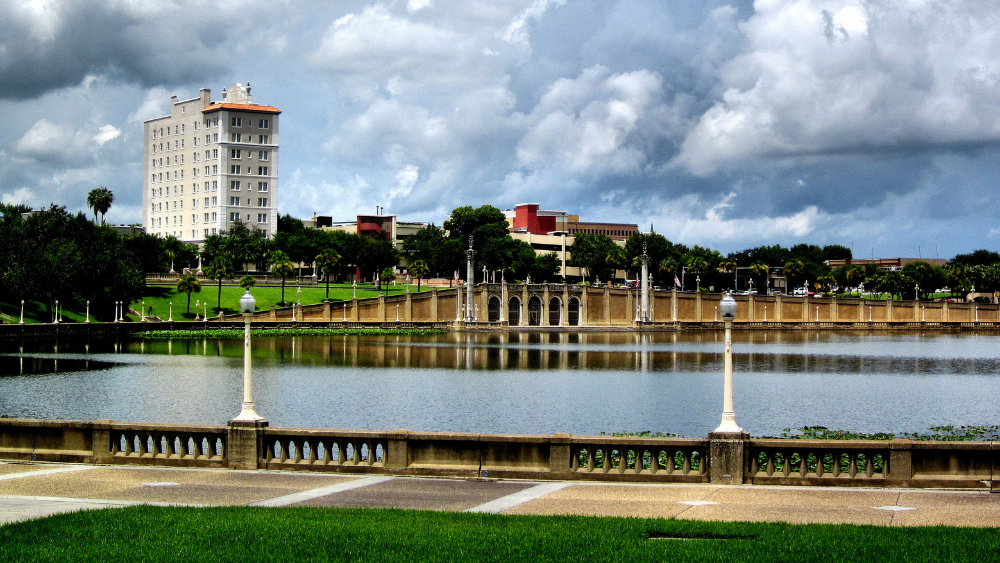We all know Lakeland is famous for (and got its name from) its 38 lakes around town — but how did those lakes get their names?
According to early newspaper + historical records, lakes were often named after notable Lakeland pioneers and settlers. However, there are a few that broke this tradition. Take a figurative dive into the history behind some of Swan City’s most iconic lakes to learn how they earned their monikers.
Lake Beulah
Lake Beulah was supposedly named after an attractive local woman, with whom young men in Lakeland became infatuated. However, other historians argue it was named after the daughter of a notable civil engineer. Other reported original names for this lake included Deep Lake and Swimming Lake. The moral of the story: If you’re not naming a body of water after the person of your affection, do you even like them?
Lake Bonny
Originally registered as Lake Boney, this lake was named after David J.W. Boney in 1854. Boney settled in Lakeland in May 1845 and is remembered as a pioneer of the Kissimmee River Valley.
Lake Hollingsworth
Probably one of the most well known stories, Lake Hollingsworth was named after John Hollingsworth, one of the area’s first known settlers, who moved his family near the lake.
Lake Hunter
Historians are divided on how this lake just south of the RP Funding Center got its name. Some stories claim it was named for a camper who lived on the south shore of the lake, while others claim it was named after a family who lived off the eastern shore.
Lake Mirror
At first, many called this body of water Lake Bushy from the excess of trees and undergrowth surrounding it in the city’s early years. It eventually got renamed to its current moniker on account of the water’s clarity and how it mirrors light.
Lake Morton
John P. Morton, brother-in-law of Abraham Goodwin Munn (the founder of Lakeland), bought and named this lake when he visited the town in 1889.

Canoe believe it? Lake Parker is one of the largest lakes in Polk County.
Photo via @LakelandParkRec
Lake Parker
This lake is Lakeland’s largest (and is the sixth-largest in all of Polk County). It was named after Streaty Parker, an early settler who lived on its shores. In the early days of Lakeland, an island called Deeson’s Island was located in the northern end of the lake and was known as a spot to harvest moonshine.
Lake Wire
According to local lore, this lake was originally called “Israel’s Dish” after a cowboy by that name (who was known for camping there) left behind a dish that he used as a drinking cup. Following the Industrial Revolution, the International Ocean Telegraph Company constructed the first telegraph wire through Polk County in 1867, bypassing the shoreline of “Israel’s Dish,” and thus earning the name of Lake Wire.
If these stories made you eager to dive into more water-ful history, check out our quintessential guide to Lakeland’s lakes for some additional facts.







